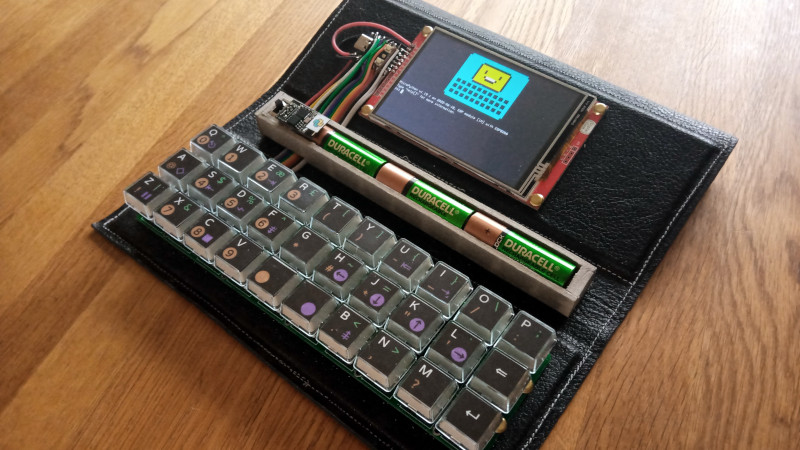The humble desktop serial terminal may have long disappeared from the world of corporate IT, but there are still plenty of moments when professionals and enthusiasts alike need to hook up to a serial port. Many of us use a serial port on our laptops or other mobile devices, but [Neil Crawforth] has gone one better than that with the VT2040. It’s an old-style serial terminal in a super-handy portable format, and as one might guess from the name, it has an RP2040 microcontroller at its heart.
Attached to the chip is a rather nice keyboard, and an ILI9488 480×320 LCD display. The software is modular, providing a handy set of re-usable libraries for the different functions including a PIO-based serial port. His main application seems to be talking to an ESP8266, but we’re guessing with a MAX232 or other level shifter chip it could drive a more traditional port. Everything can be found in the project’s GitHub repository, allowing anyone to join the fun.
As long-time readers will know, we’ve been partial to a few serial terminals in the past. Particularly beloved is this extremely retro model with vintage dot matrix LEDs.















No link to previous entries is given. Regarding this every, nice terminal with a tight budget!
My needs for a thing like this used to be acute, but frankly they have now all but evaporated. I don’t know exactly if that is sad or wonderful. This is nice. If I was to adopt this, I would make it use a generic USB keyboard (which I could carry separately and/or replace as needed). And I would want the Max232 level shifter so I could use it with old gear with the +-12 volt levels that were the one time standard.
A small portable thing like this would be for when I need to carry the terminal to some big rack mount thing I have to troubleshoot. If I can carry the “thing” into my office, I just use a USB to serial dongle and a terminal on my desktop.
Ssh is the way to be modern…
https://github.com/defdefred/Remotty
Sure. You just need an SSH client that runs on an ESP8266. That doesn’t seem to exist yet, but there’s sample code for an SSH server at https://github.com/wolfSSL/wolfssh-examples/blob/main/Espressif/ESP8266/ and it’s on my to-do list.
Don’t you mean server? That actually does exist. Also on my list of things to do.
https://www.wolfssl.com/wolfssh-examples-espressif-esp32-esp8266/
The death of serial has been greatly exaggerated. I still carry USB to serial adapters in my kit, and use them several times a year.
No it has not. The S in USB means serial. Or maybe you can thinking of TTL or RS232???
Sheesh, you know what they mean. In this case, serial means “anything supported by a UART”. RS-232 is actually far too specific; it specifies logic levels and connectors that aren’t used much in embedded applications. “Asynchronous serial” is too broad; it includes things like OneWire. In colloquial usage, the word “serial” without context usually refers to the RS-232 data protocol without the logic level and connector specifications.
*Technically* asynchronous serial also encompasses USB, Ethernet over twisted pair, SATA, DisplayPort, PCIe… need I go on?
UART is a good lowest common denominator. On any given platform, it usually takes very little code to get it running, and you can send simple messages back and forth. All you really need to implement it in hardware is a couple of shift registers and some edge detection logic.
Is it called Millie?
i dream about minix or fuzix on this. and week working time
cc,bash,mc and git ;)
Who is the brainless dude who put the arrow keys like that ?
You must not use vim.
And Vim got it from ASCII. Control-H was backspace, so left arrow, Control-J was line feed, therefore down arrow. Control-L was form feed, so not exactly right arrow, but the K and L just seemed like good companions to the the H and J.
That goes back to the 70s, at least:
https://en.wikipedia.org/wiki/ADM-3A#Hardware